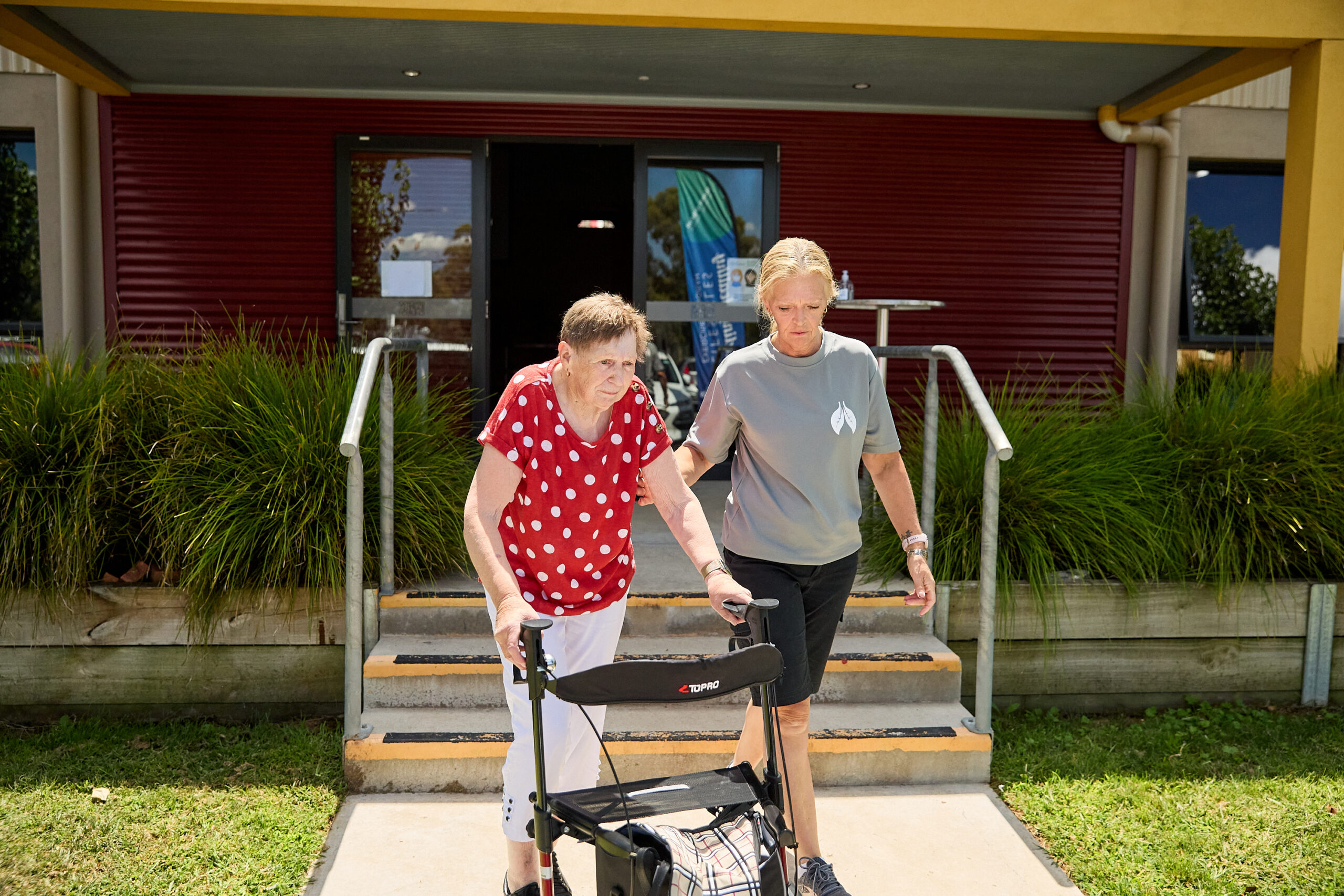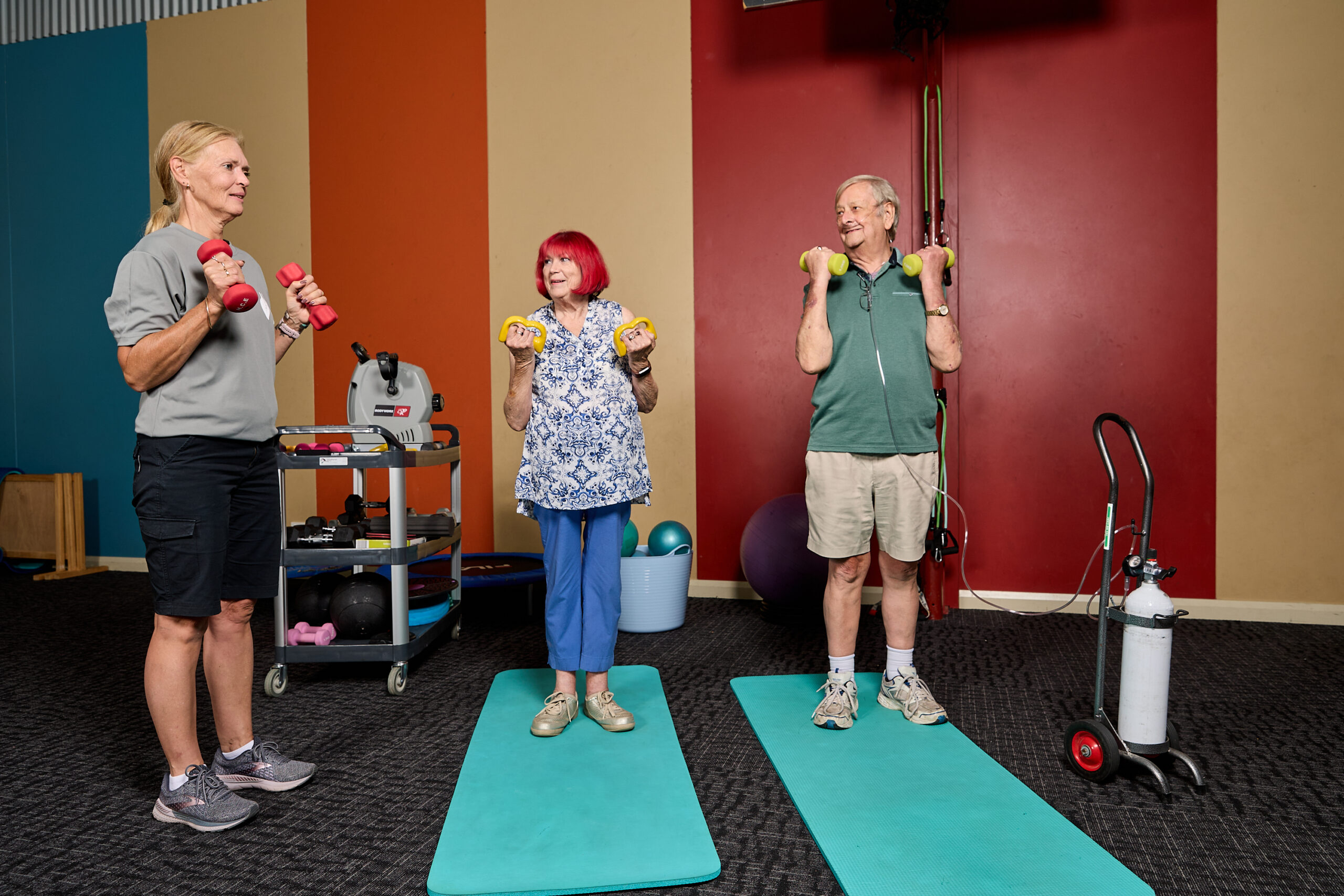Use of Supplemental Oxygen and Bronchodilators
Supplemental Oxygen
Exercise-induced oxygen desaturation is common among people with COPD, with up to 47 % of patients referred to pulmonary rehabilitation demonstrating a decrease in oxygen saturation measured by pulse oximetry (SpO2) to less than 90% during a field walking test3233.
In people with moderate to severe COPD, physiological studies have demonstrated that supplemental oxygen during an acute bout of exercise reduces minute ventilation at equivalent work rates and delays the onset of dynamic hyperinflation and associated dyspnoea 3436, thus augmenting exercise capacity. Therefore, it might be expected that supplemental oxygen during exercise training would be beneficial.
However, evidence to date does not support the use of supplemental oxygen during exercise training in COPD patients who are normoxaemic at rest and desaturate during exercise. A recent large randomised controlled trial evaluating pulmonary rehabilitation with and without oxygen supplementation in people who were normoxaemic at rest but desaturated during a six-minute walk test, showed no differences in the improvements in exercise capacity or health-related quality of life with supplemental oxygen compared to medical air37. These findings support those of previous smaller RCTs evaluating the use of oxygen in those who desaturate during exercise38. The clinical implication is that supplemental oxygen to correct oxygen desaturation is unlikely to be required for patients with COPD to benefit from exercise training.

To determine whether to provide supplemental oxygen during exercise training, the following is suggested as a guide:
- If the patient’s oxygen saturation does not go below 90% during a walk test then oxygen is not required during exercise training
- If the patient demonstrates oxygen desaturation between 89-80% during a walk test, (need 2 tests at baseline to account for a learning effect, unless this is clinically inapproporiate) then repeat the test on supplemental oxygen (2-4 L/min). If the distance walked increases by 10% or the minimum clinical important distance, consider training using supplemental oxygen.
- If the patient demonstrates oxygen desaturation below 80% during a walk test, consider using supplemental oxygen during exercise training.
Specific exercises that often cause oxygen desaturation in susceptible patients are those that are weight bearing using a large muscle mass e.g moderate to high intensity walking, climbing stairs, step-ups and sit-to-stand.
Cycling induces less oxygen desaturation than walking in patients with COPD and ILD.

Oxygen desaturation during small muscle mass exercise (e.g. arm exercise) and during resistance training is not very common in people with COPD. The extent of oxygen desaturation during these activities will also be less in patients with ILD.
It should be noted that patients on long term oxygen therapy (LTOT) should undertake the exercise training program while using oxygen. It may be necessary to increase the flow rate by 1-2 L/min, above the prescribed flow rate when the patient is exercising. Any potential change to the patient’s prescribed oxygen would need to be discussed with the medical practitioner who prescribed oxygen.
Tips for people on LTOT:
- Methods available for transporting small portable oxygen cylinders include a portable trolley, small suitcase with handle and wheels such as can be taken on board a plane, or in the basket attached to a wheeled walker (rollator).
- Some patients may choose to carry their oxygen cylinder in a shoulder bag, however the cylinder, especially if a conservation device is also used, may limit exercise tolerance due to the additional weight.
- Portable oxygen concentrators are now available. However, it is necessary to regularly monitor oxygen saturation in patients using these when exercising to ensure that sufficient oxygen is delivered, especially if a conserving device is used.
Exertional desaturation is also common in patients with ILD, with approximately 54% demonstrating a decrease in oxygen saturation of SpO2 < 88% during the 6MWT with the prevalence increasing with the severity of lung function impairment (43). Two small studies in IPF have found that oxygen significantly increased endurance time and reduced exertional dyspnoea during a single bout of cycling (44,45) suggesting oxygen could optimise the physiological improvements of exercise training. Further research is required to determine whether oxygen during PR consistently enables patients with ILD, limited by exertional desaturation, to achieve the recommended training intensity and the desired progressions. However given the high prevalence of profound exercise-induced desaturation in patients with ILD, it is currently recommended that supplemental oxygen should be available at all centres providing PR for patients with ILD (46)
Bronchodilators
Long-acting bronchodilators should be taken as prescribed.
The majority of patients with COPD do not require short-acting bronchodilators (‘relievers’) prior to or during exercise as they should be taught during a pulmonary rehabilitation program that they can recover from exercise-induced breathlessness by taking short rest periods and then resuming exercise when their breathlessness is under control. For some individuals, specific work:rest intervals in the form of interval exercise training should be prescribed to manage the patient’s breathlessness.
Short-acting bronchodilators may be indicated in those patients who experience significant chest tightness and/or wheeze during exercise. In such patients, taking short-acting bronchodilators before exercise may enable exercise training at a greater intensity, for a longer duration with less symptoms.


